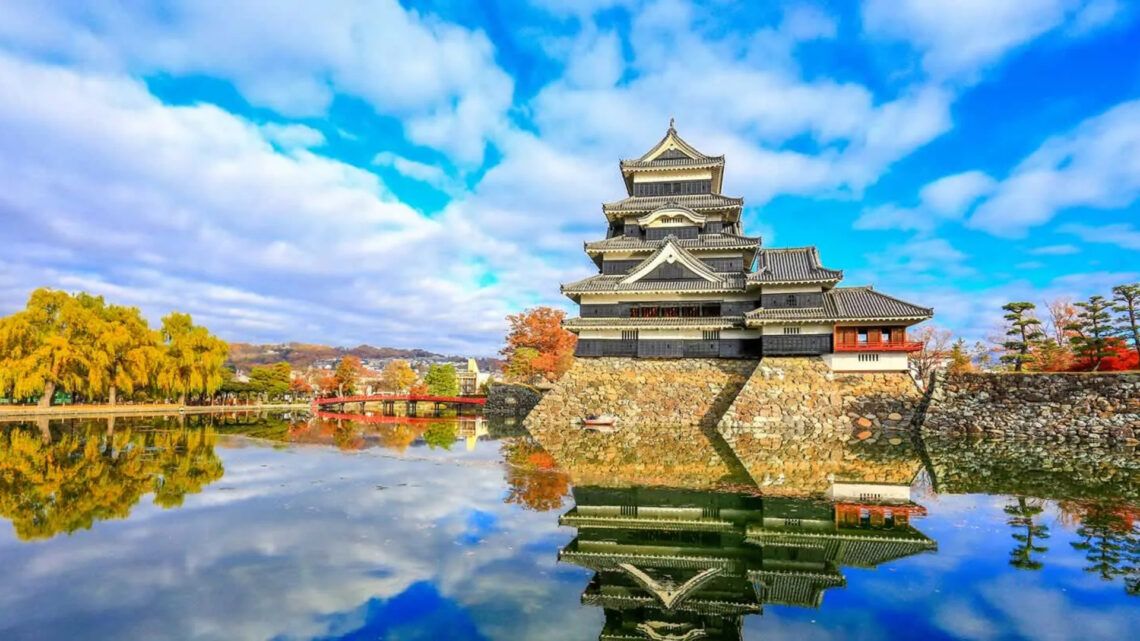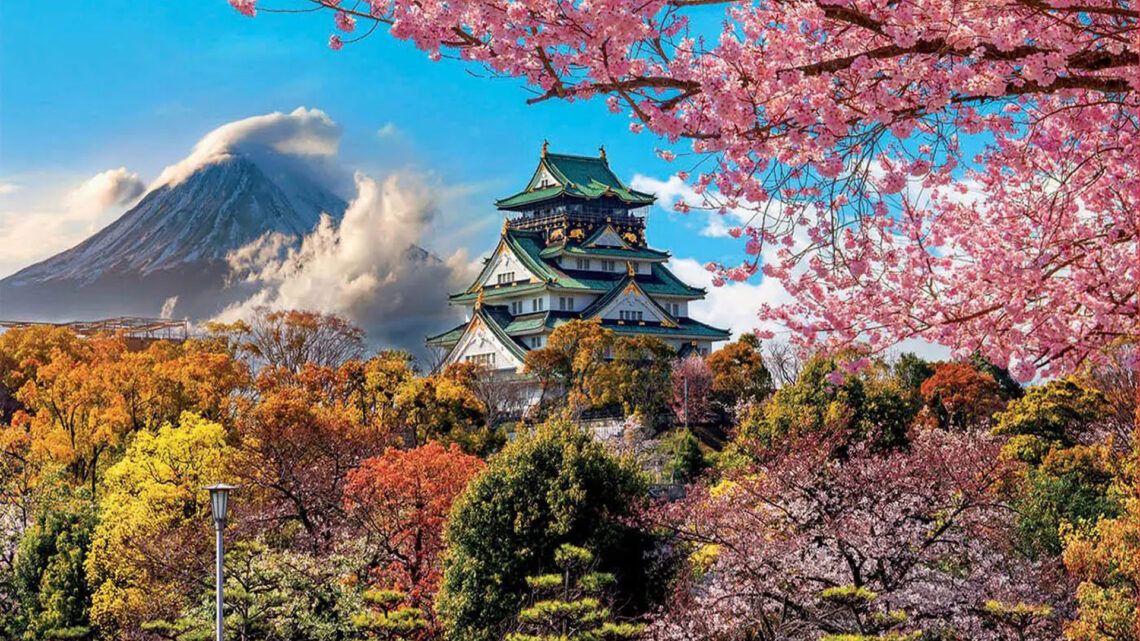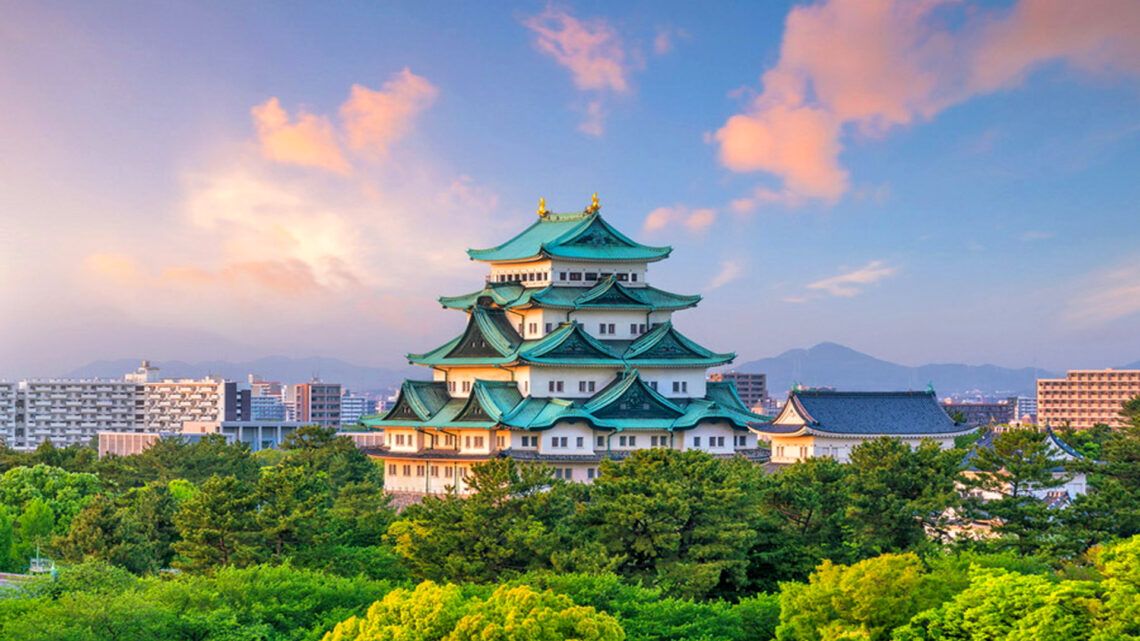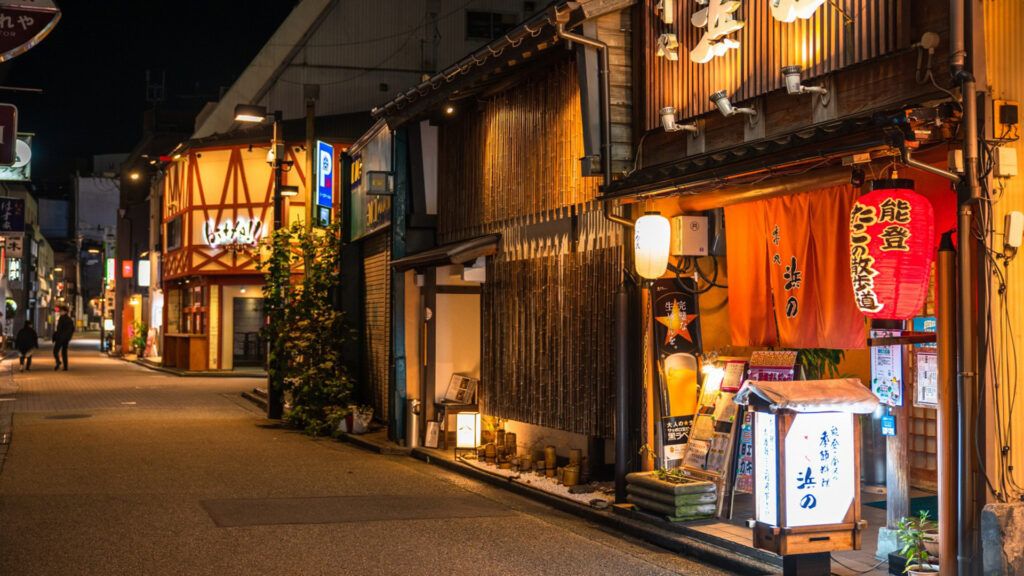
Kanazawa, the capital of Ishikawa Prefecture, is one of Japan’s cities that has preserved its historical atmosphere and cultural significance over the centuries. At the heart of this city lies the well-preserved Samurai district of Nagamachi, offering a fascinating glimpse into the life of the samurai during the Edo period. Often referred to by tourists as “Little Kyoto,” Kanazawa has managed to retain its charm and historic districts despite Japan’s modernization. In this article, you will find not only a detailed description of Nagamachi but also an in-depth analysis of the history, architecture, and culture of this unique district that played a significant role in Japanese history.
To truly understand the Samurai district of Nagamachi, it is essential to look at the history of Kanazawa itself. The city developed in the 16th century around Kanazawa Castle, which served as the seat of the Maeda clan, one of the most powerful feudal lords of the Edo period. During the Edo period (1603-1868), Kanazawa experienced a golden age and became one of the wealthiest cities in Japan. The Maeda family, who ruled over the Kaga domain, to which Kanazawa belonged, was known for their patronage of arts and culture, making the city an important cultural center.
The Samurai district of Nagamachi, located west of Kanazawa Castle, was the residential area of the samurai who served the Maeda clan. High-ranking samurai lived here in stately residences, while lower-ranking samurai and servants were housed in smaller homes. The architecture and layout of the streets in Nagamachi reflect the hierarchical structure of samurai society. The narrow alleys, lined with clay walls and water canals, offer a glimpse into what life in this district might have looked like centuries ago.
Kanazawa has a rich history closely linked to Japan’s development during the feudal era. The city was founded in the 16th century around Kanazawa Castle, which became the center of the Kaga domain, the largest and wealthiest domain in Japan outside the Tokugawa Shogunate. This domain was ruled by the powerful Maeda family, who solidified their position both militarily and culturally.
Kanazawa’s rise began during the Sengoku period, an era of internal wars where various clans vied for dominance. The city was originally controlled by Ikko-ikki monks, a religious sect that rebelled against the ruling samurai class. However, these Ikko-ikki were defeated in 1580 by Maeda Toshiie, who took control of the area and laid the foundation for the city’s subsequent prosperity.
Under the rule of the Maeda family, Kanazawa experienced a period of peace and prosperity. The Maedas, regarded as wise and forward-thinking rulers, not only promoted military strength but also arts, crafts, and education. This led to Kanazawa growing into a significant cultural center known throughout Japan for its craftsmanship, particularly in lacquerware, gold leaf processing, and silk weaving.
During the Edo period, Kanazawa was one of Japan’s largest cities, renowned for its impressive architecture and well-planned districts. Kanazawa Castle was at the center of this development, serving as the Maeda family’s power base. Surrounding the castle were numerous districts, including the Samurai district of Nagamachi, the Geisha district of Higashi Chaya, and the temple district of Teramachi.
The city remained under the control of the Maeda family until the Meiji Restoration in 1868. With Japan’s modernization and the abolition of the feudal system, Kanazawa lost its political significance but retained its cultural and historical importance. Today, Kanazawa is a vibrant example of Japanese history, where old traditions and modern life coexist harmoniously.
In modern times, the Samurai district of Nagamachi is not only a tourist highlight but also an important cultural heritage site that symbolizes the connection between past and present. The district attracts visitors from around the world who seize the opportunity to immerse themselves in samurai history and admire the well-preserved architecture.
The efforts to preserve and restore Nagamachi are a testament to the importance Japan places on preserving its history. Many of the residences in Nagamachi are now open to the public and serve as museums showcasing the life of the samurai and the cultural achievements of the Edo period. These places not only provide insights into the past but also remain a living part of Japanese identity.
The Restoration and Preservation of Nagamachi
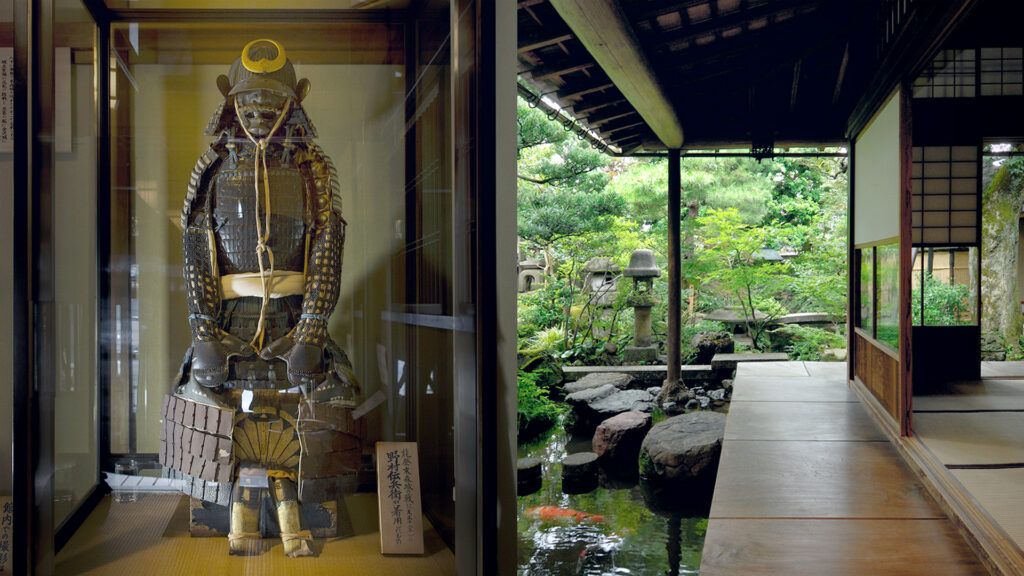
The preservation of the Nagamachi Samurai District has been a long-term project supported by both the city of Kanazawa and the Japanese government. Restoration of the old residences and streets began as early as the Showa era (1926-1989) and continued throughout the 20th century. The goal was to maintain the district’s authentic atmosphere while ensuring it met modern infrastructure and tourism demands.
A key aspect of Nagamachi’s preservation involved restoring the clay walls and traditional wooden buildings. These restoration efforts were carried out by specialized craftsmen using techniques that have been passed down through generations in Japan. Preserving the water canals that flow through the district was also an essential part of the restoration, as these canals were historically used not only for irrigation but also for firefighting during the Edo period.
In addition to physical restoration, the preservation of cultural practices associated with the samurai heritage plays an important role. Events and festivals celebrating samurai traditions are regularly organized in Nagamachi and throughout Kanazawa. These cultural activities help raise awareness of the history and significance of the Samurai District.
Kanazawa has managed to preserve its historical roots while remaining a modern city known for its innovations and cultural offerings. The city attracts a growing number of tourists each year, who enjoy both the historical sites and modern amenities.
The opening of the Hokuriku Shinkansen line in 2015, which connects Kanazawa directly to Tokyo, has significantly boosted tourism in the region. The increased accessibility has led to more visitors from both Japan and abroad exploring the city and experiencing the beauty of Kanazawa and Nagamachi.
In addition to the Samurai District, Kanazawa offers other cultural attractions, such as Kenroku-en Garden, one of Japan’s three most famous landscape gardens, and numerous museums dedicated to art, history, and craftsmanship. The combination of historical sites, traditional crafts, and modern art makes Kanazawa a unique travel destination.
The Architecture and Layout of Nagamachi
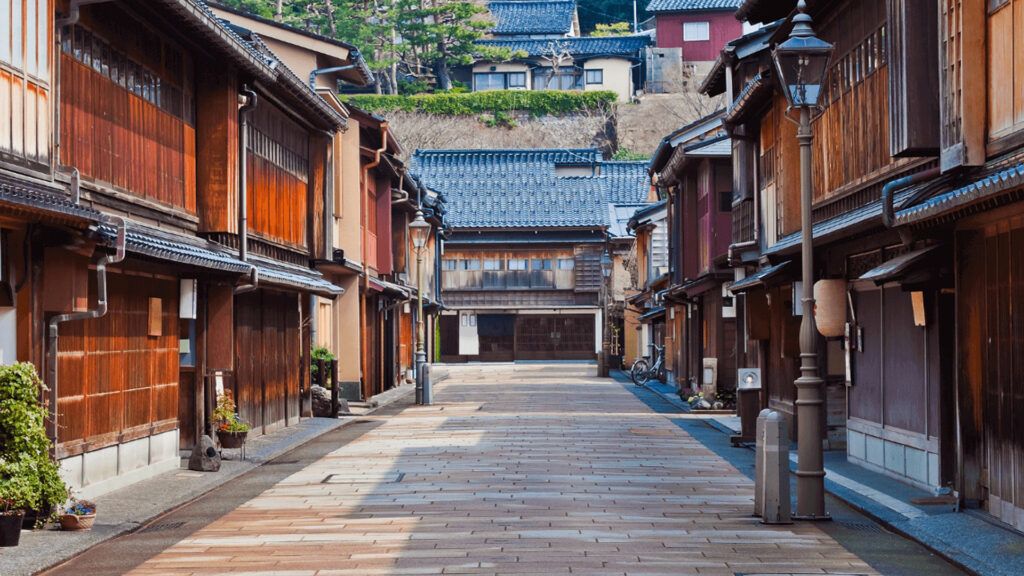
The streets of Nagamachi form a labyrinth of narrow alleys, lined with high clay walls known as “tsuchi-kabe.” These walls, often covered with reed mats to protect them from the elements, are one of the district’s defining features. They served not only as protection for the samurai residences but also as status symbols. The taller the walls, the higher the rank of the samurai who lived there.
Many of the residences in Nagamachi are well-preserved or have been carefully restored to their original condition. These houses, often referred to as “buke-yashiki,” have a characteristic design typical of the Edo period. The buildings are constructed of wood and feature traditionally curved roofs covered with tiles. The interiors of these residences are simple yet elegant, with tatami mats, shoji (paper sliding doors), and a tokonoma (an elevated alcove used to display art or flower arrangements).
A particularly notable feature of these residences is the existence of “engawa,” a narrow, covered veranda that surrounds the house. The engawa served as a transitional space between the inside and outside world, offering a view of the meticulously maintained gardens, which were an essential part of every samurai home. These gardens, often called “tsubo-niwa,” were small but carefully designed, reflecting the aesthetics and philosophy of the samurai.
Life in Nagamachi was deeply influenced by the strict rules and honor code of the samurai. The samurai who lived here were warriors who followed the Bushido code, a code of conduct that emphasized virtues such as loyalty, courage, and honor. However, despite their role as warriors, the samurai were not constantly at war during the Edo period, which was relatively peaceful. As a result, they also took on administrative and cultural duties.
Daily life in Nagamachi was characterized by a high level of discipline and rituals. The samurai regularly trained in martial arts such as swordsmanship (Kenjutsu) and archery (Kyudo). At the same time, they engaged in education, learning calligraphy, poetry, and the tea ceremony. These cultural activities were not only a sign of refinement but also a way to sharpen the mind and find inner peace, in accordance with the Bushido code.
The families of the samurai also played a vital role in the life of the community. Women were typically responsible for managing the household and raising the children, while the elder sons often followed in their fathers’ footsteps and became samurai themselves. The community in Nagamachi was closely knit, with residences often connected by internal pathways and courtyards, fostering close cooperation and support within the samurai families.
Kanazawa, and particularly the Samurai district of Nagamachi, was not only a military center but also a cultural hub. The Maeda family actively promoted the arts to a degree that gained recognition far beyond their domain’s borders. As a result, Kanazawa became a place where various cultural influences converged and blended.
One notable cultural legacy present in Nagamachi is the tea ceremony. The samurai of Kanazawa were passionate practitioners of this tradition, which involved much more than the simple act of drinking tea. The tea ceremony was a spiritual ritual emphasizing mindfulness, respect, and purity. Many of the residences in Nagamachi feature specially designed tea rooms used for these ceremonies.
Another cultural element preserved in Nagamachi is the art of calligraphy. The samurai viewed calligraphy as a form of meditation and a way to refine their character and discipline. Many old scrolls and documents preserved in Nagamachi’s residences bear witness to this deep appreciation for the art of writing.
In addition to calligraphy, traditional Japanese gardens played a significant role in samurai culture. The gardens in Nagamachi exemplify the subtle beauty and harmonious integration of nature and art typical of Japanese garden design. These gardens, often characterized by their simplicity and elegance, served not only as sources of aesthetic pleasure but also as places for reflection and contemplation.
Activities Around Kanazawa

The region surrounding Kanazawa offers a wide range of attractions and activities that will delight both nature lovers and cultural enthusiasts. Here are some of the top recommended outings in the area:
Shirakawa-go and Gokayama
About two hours from Kanazawa, the picturesque villages of Shirakawa-go and Gokayama are famous for their unique Gassho-Zukuri farmhouses. These traditional houses, with their steep thatched roofs resembling praying hands (hence the name “Gassho”), have been designated as UNESCO World Heritage sites. Visiting these villages provides a glimpse into rural Japanese life as it has been practiced for centuries. Particularly in winter, when the roofs are covered in snow, Shirakawa-go and Gokayama present a fairy-tale scene. In addition to touring the houses, you can also stay overnight in some, offering a special opportunity to immerse yourself in the local culture.
Noto Peninsula
The Noto Peninsula extends northward from Kanazawa into the Sea of Japan and is known for its dramatic coastal landscapes, hot springs (onsen), and traditional fishing villages. Driving along the coast offers breathtaking views of the sea and rugged cliffs. A highlight of the Noto Peninsula is the Wajima Morning Market, one of Japan’s oldest markets, where you can explore local specialties such as fresh fish, seafood, and crafts. The Chirihama Nagisa Driveway, a unique beach where you can drive on the sand, is also worth a visit. For nature enthusiasts, the Noto Peninsula offers many hiking and biking trails through picturesque landscapes. A visit to the hot springs of Wakura Onsen completes the experience, providing relaxation after a day of exploration.
Kaga Onsen
South of Kanazawa lies the Kaga Onsen area, renowned for its traditional hot springs. The region consists of four main onsen towns: Yamanaka Onsen, Yamashiro Onsen, Katayamazu Onsen, and Awazu Onsen. Each of these towns has its own charm and offers numerous opportunities to relax in hot springs. Yamanaka Onsen is particularly known for its scenic walking paths along the Kakusenkei River, while Yamashiro Onsen is famed for its long history and impressive ryokan (traditional inns). Katayamazu Onsen offers a beautiful view of Shibayama Lake, and Awazu Onsen is known for its traditional ryokan and relaxed atmosphere. Visiting one of these onsen allows you to enjoy Japanese bathing culture in a serene and idyllic setting. Many of the ryokan in this area also offer culinary experiences featuring local specialties.
Fukui and the Eiheiji Temple Complex
About an hour from Kanazawa is Fukui Prefecture, home to the impressive Eiheiji Temple complex, one of Japan’s major Buddhist centers. Eiheiji is a Zen temple founded in the 13th century by Dogen Zenji, the founder of the Soto school of Zen Buddhism. The temple complex is surrounded by ancient trees and offers a peaceful and spiritual atmosphere. Visitors can participate in meditation sessions and learn more about Zen practices. Some temples also offer overnight stays, allowing you to experience monastic life firsthand. Fukui is also known for its dramatic coastline, particularly the Tojinbo Cliffs, which extend precipitously into the Sea of Japan. These steep basalt cliffs are a popular destination for hikers and photographers.
Mount Hakusan
For nature lovers and hikers, Mount Hakusan, one of Japan’s “Three Sacred Mountains,” is a must-visit. The volcano, standing about 2,700 meters high, is located southeast of Kanazawa. The mountain offers challenging hiking trails that take you through dense forests, along mountain streams, and up to stunning summit views. The hike to the top of Mount Hakusan can take between 6 to 10 hours, depending on the route and pace. During the summer months, the summit is covered with alpine flowers, and in the fall, the colorful foliage offers a spectacular display. Several onsen are also located around the mountain, where you can relax after a strenuous hike, including the Hakusan Shirakawa-go White Road Onsen, known for its panoramic views.
The area around Kanazawa offers a variety of activities and destinations that combine cultural and natural beauty. Whether you’re diving into the rural history of Shirakawa-go, exploring the dramatic coastline of the Noto Peninsula, or relaxing in the hot springs of Kaga Onsen, the region surrounding Kanazawa has something for everyone. These activities perfectly complement a visit to Kanazawa itself and make your stay in this unique region of Japan an unforgettable experience.
Nomura-ke Samurai Residence
The Nomura-ke is one of the best-preserved samurai residences in Nagamachi, offering an authentic glimpse into samurai life. The house features beautiful gardens, considered among the finest in Kanazawa, and numerous antique artifacts, including armor and weapons that once belonged to the samurai. Particularly impressive is the collection of calligraphy artworks and ancient scrolls displayed in the house.
Shinise Kinenkan Museum
This museum, located in a former commercial building, provides an intriguing exhibition on the trading history of Kanazawa as well as the traditions and customs of the samurai. It also houses a collection of old medicines and remedies used during the Edo period, offering a fascinating insight into the medicine and everyday life of that time.
Maeda Tosanokami-ke Shiryokan
This museum is dedicated to the Maeda clan and showcases an impressive collection of artifacts documenting the life and history of this powerful family. Exhibits include ancient weapons, armor, artworks, and documents that illustrate the role of the Maeda family during the Edo period and their influence on the development of Kanazawa.
Kanazawa Food Specialties
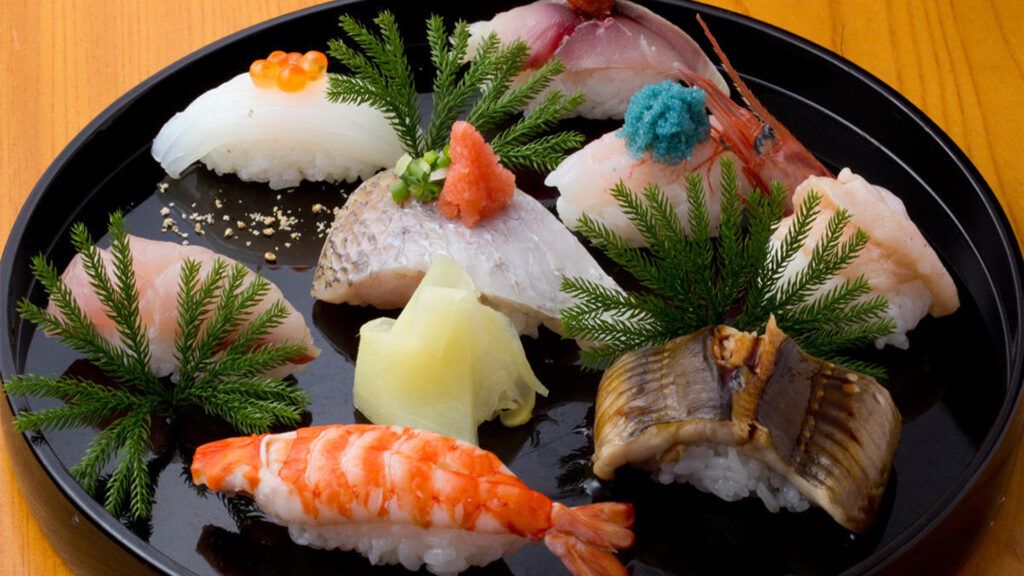
Kanazawa is not only known for its rich history and culture, but also for its diverse and exquisite cuisine. The city’s location on the Sea of ??Japan and its long tradition as a cultural center have helped Kanazawa develop an impressive culinary scene. Here are some of the most famous culinary specialties you must try in Kanazawa:
Kaisendon – Bowl of Fresh Seafood
Kanazawa is famous for its fresh seafood, which comes straight from the Sea of ??Japan. One of the best ways to enjoy these delicacies is in the form of a kaisendon – a bowl of rice generously topped with various types of raw fish, mussels and crustaceans. The Omicho Market in Kanazawa is the ideal place to try a fresh kaisendon. The market has been the heart of Kanazawa’s fish trade for over 300 years and offers an impressive selection of fresh produce.
Kaga Ryori – Traditional Cuisine of Kaga
Kaga Ryori is the traditional cuisine of the Kaga region, which includes Kanazawa. This cuisine is characterized by the use of local ingredients and delicate cooking techniques. Typical dishes include:
Jibuni – A one-pot dish consisting of duck meat, vegetables, and wheat gluten in a light soy sauce broth. The dish is often seasoned with mustard and is especially popular during the winter months.
Kabura-zushi – A special type of sushi that involves soaking yellow turnips (kabura) and salted yellowtail mackerel (buri) in fermented rice. This delicate delicacy is traditionally eaten during the winter and is a specialty that showcases the region’s artful fermentation technique.
Gori Karaage: Deep-fried goby fish caught in the region’s rivers. This simple yet tasty dish is often served as a side dish or snack.
Golden Leaf – Gold Leaf Decorated Food
Kanazawa produces about 99% of all of Japan’s gold leaf, which is used in handicrafts and also in cuisine. Many restaurants and cafes in Kanazawa offer food and drinks decorated with wafer-thin gold leaves, giving dishes a luxurious touch.
A famous example is gold leaf ice cream, a vanilla soft serve covered in a leaf of real gold. It is not only a feast for the palate, but also a popular photo subject.
Noto Gyu – Noto Beef
Noto beef is another local delicacy known for its tenderness and rich flavor. The meat comes from cattle bred on the Noto Peninsula and raised under strict conditions to ensure the highest quality. It is often served in luxurious dishes such as sukiyaki, shabu-shabu, or simply grilled as a steak.
Fugu – Pufferfish
Fugu is a pufferfish known for its delicate flavor and special preparation, as it can be poisonous if handled incorrectly. There are a few specialized restaurants in Kanazawa that serve fugu dishes prepared by trained and licensed chefs. Fugu is often served raw as sashimi or in a hot pot (fugu nabe).
Kaga Yasai – Traditional Kaga Vegetables
The Kanazawa region is also known for its variety of locally grown vegetables, known as kaga yasai. These vegetables are grown using traditional methods and are characterized by their intense flavor and high quality. Some of the most famous varieties include kaga lotus root, gorojima sweet potatoes, and kinjiso (a leafy vegetable). These ingredients can be found in many traditional dishes of the region and are an integral part of kaga ryori.
Wagashi – Japanese sweets
Kanazawa has a long tradition of making wagashi, the traditional Japanese sweets often served with tea. Made from natural ingredients such as bean paste, rice flour and sugar, these sweets are known for their artistic design and subtle taste.
A well-known wagashi shop in Kanazawa is Morihachi, which has been around for over 390 years. Here you can try classic wagashi such as namagashi (fresh, soft sweets) and higashi (dry, crunchy sweets) that are perfect for the tea ceremony.
Sake – Japanese rice wine
The Ishikawa region, which Kanazawa belongs to, is also known for its excellent sake breweries. The rice wine here is brewed using traditional methods, and the breweries use the region’s pure water and high-quality rice to produce sake of exceptional quality.
Some of the region’s most famous sake breweries offer tours and tastings where you can learn more about the brewing process and try different varieties.
All in all, Kanazawa is a foodie’s paradise that offers a variety of unique and traditional dishes. From fresh seafood to luxurious gold leaf specialties to centuries-old recipes, the city’s culinary scene is as diverse as its cultural history. A visit to Kanazawa is not complete without sampling these regional delicacies that reflect the region’s rich heritage and creative influences.
Getting to Kanazawa
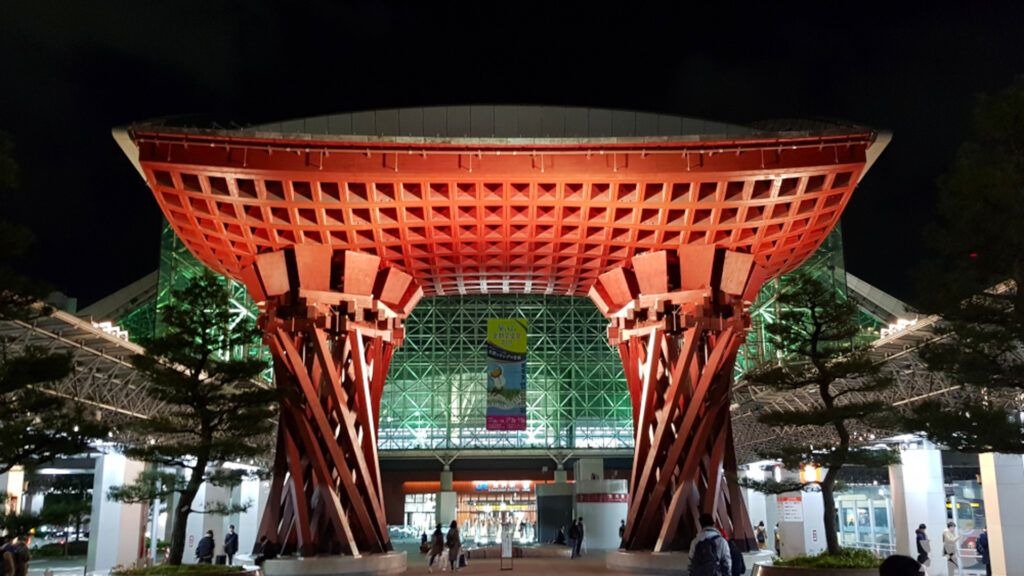
Kanazawa is easy to get to due to its well-developed transportation infrastructure, making it a popular destination for both domestic and international tourists. Here are some of the most common travel options:
By train:
Arguably the most convenient way to travel to Kanazawa is by train. Since the opening of the Hokuriku Shinkansen Line in 2015, Kanazawa has been directly connected to Tokyo. The Shinkansen ride from Tokyo to Kanazawa takes about 2.5 hours, which has significantly reduced travel time. This high-speed connection has made Kanazawa an attractive destination for short trips.
For travelers arriving from other parts of Japan, there are also good train connections. From Osaka and Kyoto, Kanazawa can be reached by the Limited Express Thunderbird, which takes about 2 hours from Osaka and 2.5 hours from Kyoto. There are also direct connections from Nagoya on the Limited Express Shirasagi, which takes about 3 hours.
By Air:
The closest airport to Kanazawa is Komatsu Airport, located about 30 kilometers southwest of the city. The airport is served by several domestic flights that connect it to cities such as Tokyo, Sapporo, Fukuoka, and Naha. There are regular bus services from Komatsu Airport that take travelers directly to Kanazawa city center in about 40 minutes.
International travelers can also arrive via Osaka’s Kansai Airport or Tokyo’s Narita Airport and then continue on to Kanazawa by train.
By Bus:
There are also numerous long-distance buses that connect Kanazawa to other major cities in Japan. These buses are a cost-effective alternative to the train and offer convenient overnight trips from Tokyo, Osaka, and Kyoto. Journey times vary depending on the departure point, but are typically between 7 and 9 hours.
By Car:
For travelers who prefer to travel by car, Kanazawa is accessible via Japan’s extensive highway network. The journey from Tokyo takes around 6 hours, while from Osaka or Kyoto it takes around 3.5 to 4 hours. Driving in the city itself is relatively straightforward, and there are plenty of parking options, especially near tourist attractions.
Where to Stay in Kanazawa
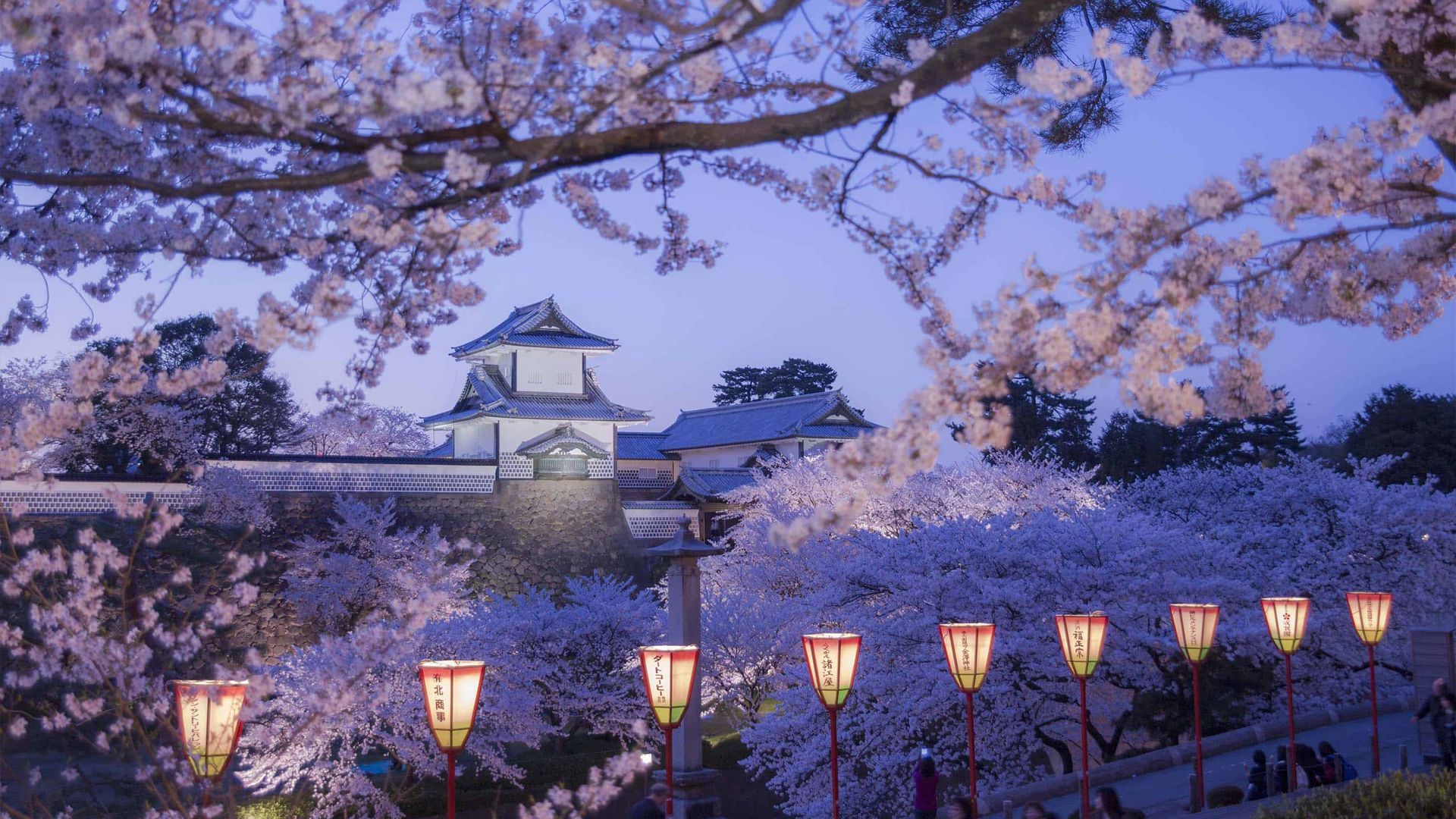
Kanazawa offers a variety of accommodation options to suit travelers’ different needs and budgets. From luxury hotels to traditional ryokan to budget hostels, Kanazawa has a place to stay for everyone. Here are some of the most popular options:
Luxury Hotels:
For travelers looking for upscale accommodations, Kanazawa has several luxury hotels that offer top-notch service and comfortable rooms. These hotels are often centrally located, close to attractions such as Kenroku-en Garden and the Nagamachi samurai district.
One example is Hotel Nikko Kanazawa, which is right next to the main train station. It offers elegant rooms, several restaurants and stunning views of the city. Another renowned hotel is the ANA Crowne Plaza Kanazawa, which is also centrally located and offers amenities such as a fitness center, spa and various dining options.
Traditional Ryokan:
For an authentic Japanese experience, traditional ryokan (inns) are a great choice. These accommodations not only offer overnight accommodation but also the opportunity to immerse yourself in Japanese culture. Guests sleep on futons spread out on tatami mats and can often enjoy a traditional kaiseki dinner.
Ryokan Sumiyoshiya is one of the oldest and best-rated ryokan in Kanazawa. It is located near Omicho Market and offers a charming, historic atmosphere. Another popular ryokan is Motoyu Ishiya, which is located just outside the city center and is known for its hot springs (onsen) and peaceful surroundings.
Mid-range hotels:
For travelers on a mid-range budget, Kanazawa has plenty of mid-range hotels that offer good value for money. These hotels often have modern amenities and include amenities like free Wi-Fi, breakfast, and sometimes public baths.
The Kanazawa Tokyu Hotel is a popular choice in this category, as it is centrally located and offers well-appointed rooms. The Mitsui Garden Hotel Kanazawa is another good option, appreciated for its stylish decor and proximity to many attractions.
Budget accommodation and hostels:
For budget travelers, Kanazawa has a number of hostels and budget hotels that offer clean and basic rooms at affordable prices. These accommodations are ideal for backpackers or young travelers who are more concerned with exploration than luxury amenities.
Emblem Stay Kanazawa is a modern hostel that offers both dorms and private rooms, creating a friendly, international atmosphere. Another recommended hostel is Guesthouse Nagonde, which is located near the train station and offers a warm, welcoming environment.
So Kanazawa is not only a fascinating historical destination, but also a city that makes it easy for its visitors to explore the past with modern amenities. The excellent accessibility and diverse range of accommodation options make it easy to visit this culturally rich city and fully enjoy the samurai district of Nagamachi as well as other attractions. Whether you are looking for a luxurious experience or prefer an authentic Japanese overnight stay in a ryokan, Kanazawa has something to suit every taste and budget.
My conclusion
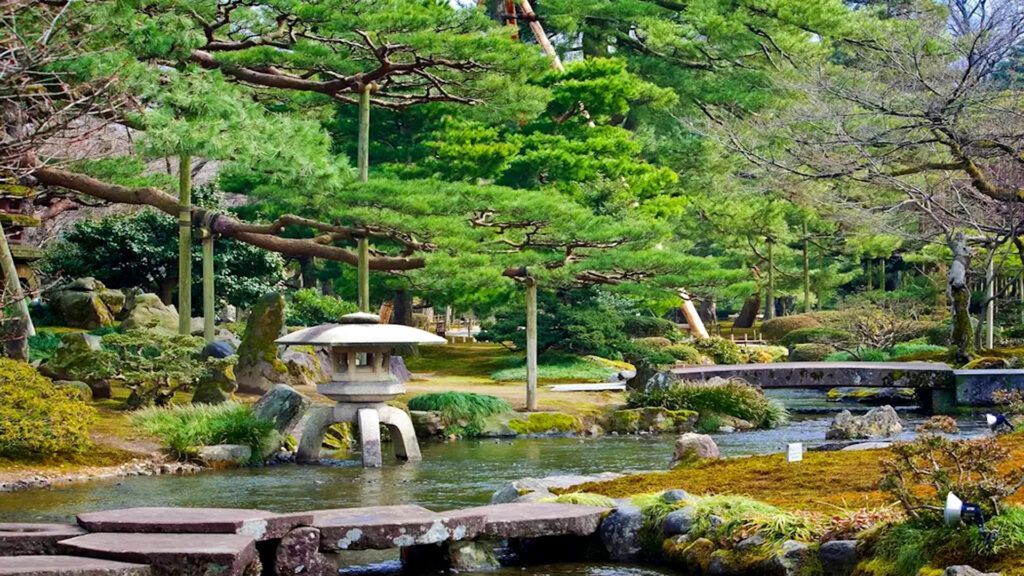
The Nagamachi Samurai District in Kanazawa is a fascinating example of Japanese history and culture. It offers a rare insight into the lives and values ??of the samurai during the Edo period and is a significant cultural heritage preserved to this day. The city of Kanazawa, with its rich history and cultural wealth, is a living testament to how tradition and modernity can coexist harmoniously.
A visit to Nagamachi is more than just a trip back in time; it is an opportunity to experience Japan’s deep-rooted traditions and enjoy the beauty of a well-preserved historical environment. For anyone interested in the history and culture of Japan, Kanazawa, and in particular the Nagamachi Samurai District, is an unmissable destination.

